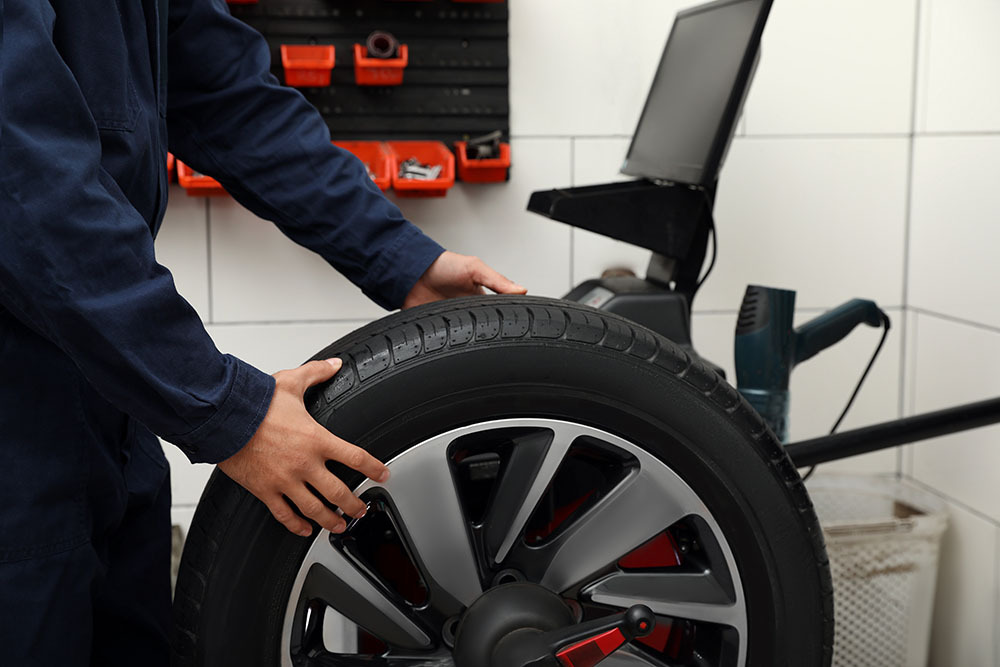TIRE TIPS

TIRE BALANCING AND WHY IT'S IMPORTANT
What is tire balancing, and what purpose does it serve? This term is often confusing and used interchangeably with the term wheel alignment; however, the two are different. Read on for more clarification on the difference between wheel balancing and wheel alignment, as well as their significance.
What is the Difference Between Wheel Alignment and Wheel Balancing?
Wheel alignment refers to how your vehicle’s tires sit when they are attached to the vehicle. Therefore, wheel alignment has more to do with a vehicle’s suspension system than it does with the actual tires. Wheel alignment has different categories, some of which include:
Toe – This refers to the angle of your vehicle’s tires in relation to one another. One way to tell if your vehicle has toe misalignment is if your vehicle automatically pulls to one side when your hands are off the steering wheel or if your vehicle wobbles and cannot drive straight. Therefore wheel alignment also aids in smoother rides.
Camber – Refers to the angle of your vehicle’s wheels from a front-view perspective. If you take a look at your vehicle’s front tires and they face either left or right when not being directed by the steering wheel then there’s a misalignment.
Several factors can affect tire alignment and some of these include hitting the hard edges of potholes, making turns that are too sharp, straining a wheel too much or hitting a speed bump at high speeds and roughly.
Wheel Balancing
Wheel balancing is all about balancing tires for a smoother ride. Tire imbalance, where one side of a tire is heavier than the other can lead to the wheel vibrating during any sort of tire rotation. You can feel the vibrations more as you travel at high speeds. It is almost impossible for manufacturers to make tires that are perfectly balanced all the way which is why even new tires can be imbalanced tires.
Wheel balancing deals with the above-mentioned and checks for weight differences in each tire. The wheel balancing machine spins each tire as well as each wheel combo to check for any imbalances in thickness in each tire itself as well as in each tire with its pair. When installing new tires, they must be balanced to ensure a smoother ride.
Nowadays, tires are installed with small tire weights on the side of the wheel. These tire weights aid in the even distribution of the weight of the tire.
The main benefits of fixing out-of-balance tires include:
- Smoother rides – As mentioned before, out-of-balance tires cause vibrations when riding. This problem is easily fixed by balancing tires.
- Lengthens the life of the tires – Out-of-balance tires also lead to uneven tire wear over time because of the uneven thicknesses. Tire tread wear is very important and the better its rating the longer the life of your tires will also be. Ultimately unbalanced tires lead to uneven tread wear.
You must find an efficient auto repair shop for tire repairs and other services such as wheel assembly/ tire assembly, any balancing services and more. It may also be more beneficial to visit an efficient tire shop for any advice on tires as well as trusted tire services.

